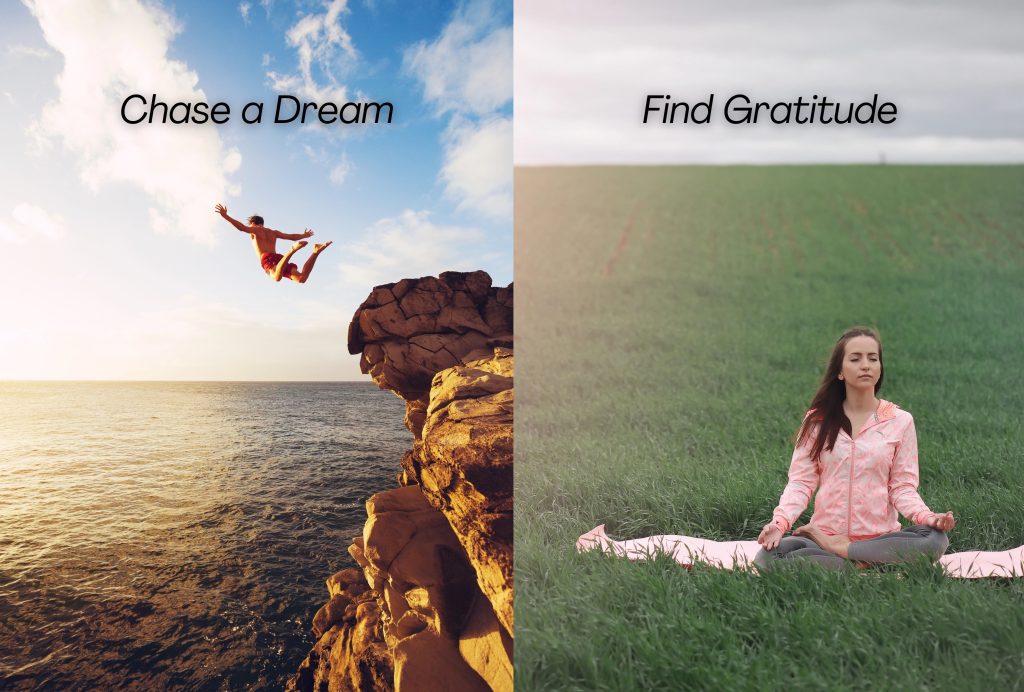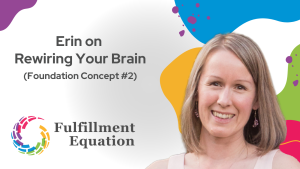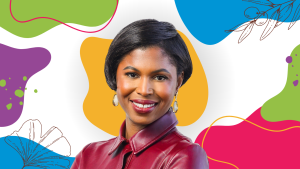
For many years, I didn’t find our home to be a very fulfilling place to live. I don’t exactly know why and I felt almost embarrassed that I felt that way – it’s a perfectly good house in a perfectly good town. Yet, for some reason, the house and I just never bonded and living there never felt quite right. It never felt like home. It never felt like “me”.
I would find myself torn between two pieces of advice we all often hear. On the one hand, there were encouragements to make a change. “Be brave and take a leap” or “let go of the vine”, meaning don’t be afraid to release something in pursuit of something else. “Do I need to be more courageous?”, I would wonder. On the other hand, there were encouragements to tap into the power of mindset. “Practice gratitude for what you have” and “look for all the little things you love and are grateful for”. “Do I need to be more thankful?”, I would wonder.
Interestingly, I would often find myself stuck between these two pieces of advice whenever there was any friction in thinking about what to do with our business, with our travels, with our kids, with our life. Inevitably, I would get frustrated and want to scream out to the invisible advice-givers, “which one do I need to be in this case? Courageous or grateful?” I knew both paths to be true. They each held their own merit. Yet, they seemed at odds with one another and there was never a clear indicator for when to lean into courage versus gratitude, pursuit versus appreciation.

What I’m beginning to realize after years of wrestling with this contradiction is that there may just be a way for both of these approaches to be true and applied at the same time. In the case of my “home that never felt like a home”, I can draw on the gratitude approach to fill my fulfillment cup in the present and I can look to the courage/change approach to set the table for fulfillment in the future. This is similar to how the unique equation helps you focus on fulfillment throughout your day and your personal strategy can help you work towards your desired future of fulfillment. So in this case, I can appreciate living where I am now by making sure that I’m engaging with the parts of the house/town that do bring me joy AND, at the same time, I can take steps toward a courageous change. In fact, it would seem that the more grounded you are in where you are now, the more successful you will be in pursuing your ideal future. This is because it’s better to be running towards something than it is to be running away from something. When you’re running towards, you have a clear direction. When you’re running away from, you could go in a million different ways, many of which may be less desirable.
So how do we create that clear direction? The answer is visioning!
After 20 years of experience in leading strategy for big companies, small entrepreneurs, government organizations, not-for-profits and everything in between, here is what I’ve found works best and how you can apply it in the form of your own personal strategy.
Visioning: The Highest Level
The first thing we want to do is create a crystal clear vision of what you would see as the most fulfilling life for yourself. What does your ideal version of a life well-lived look like? If it helps, you can pick a timeframe target of 5-10 years and briefly consider what your age and the age of your parents/kids (if applicable) will be. This is by no means necessary. You can simply focus on describing an ideal state at any future date.
Now, here’s the task: Write 7-10 sentences that clearly describe what that desired future looks like.
But wait! Before you launch into writing, let’s make sure we’re in the right headspace.

How Do You Dream?
Most of the books I would read that would talk about personal strategies would gloss over this part. At the time, it felt like they were just written by people who were naturally built to think big. There may be some truth to that, but I also realize now that they were just practiced in dreaming and when you’re practiced in anything, then sometimes you forget how you did it in the first place. I wanted to know, HOW do you come up with the big dreams? This can be especially difficult if you feel like you’re living a pretty good life. Frankly, if that is completely fulfilling to you, then it’s possible you may not get value out of a personal strategy at all! But, if there’s even the tiniest part of you that wants to go from good to great, then you’ll want to learn how to do this visioning.
The first thing I’ve learned is that, unlike when you set actionable goals, visioning should be broad and feeling-based. This is not the time for “SMART” (specific, measurable, attainable, realistic, time-bound) thinking. We’ll get to that later on! For now, we want to focus on painting a descriptive picture of what our desired future looks like. Sit quietly and imagine it. You’ll know you’re getting somewhere when you feel yourself exploring with your heart instead of your head. Try to get an image in your mind, like a photograph or painting, with yourself at the centre. In the beginning, that might be the only part that’s in focus. Now gently start exploring around the edges of yourself to bring focus to what else is in the picture. Where are you? Who’s with you? What’s near you? What do you see? Now go deeper. What does it feel like? Keep exploring until you find the edges and corners of the frame, until there is focus to the full image. Continue until the picture is so clear that you can not just see it, but you can smell, touch, taste and hear it too.

10x Dreaming
If you’re still struggling to do this exercise, you’re not alone. As grown-ups, how much time do we actually spend imagining? Like anything, it’s a muscle that needs to be flexed and many of us are out of practice when it comes to regularly engaging with our imaginations. We can also be out of practice with identifying what we want, versus what we need. This is important because your vision should be entirely based on want – spending your time the way you want to.
One approach I’ve found helpful is to push the limits of your imaginative thinking through books like Dr. Ben Hardy’s “Be Your Future Self Now” or “10x is Easier than 2x”. These guides can challenge you to take what might be a nugget of a dream and train your mind to envision what it would look like on steroids.
What I’ve learned most about visioning is that you don’t need to feel restrained by what you think is realistic for fear of not “reaching” your destination. In fact, it’s better not to impose limitations on it. Ben Hardy talks about setting “impossible goals”, and practicing that kind of imagining can help you come up with a much richer vision than you may have initially developed. Ultimately, who cares if you don’t make it to your exact 10x destination? You’ll likely have made it closer than if you’d been far less bold in your visioning.
Another strategy is the “go bigger” approach. In this, you do your best to think of an initial vision and then challenge yourself to consider what it would look like if it were a little bigger. Then you take your new bigger vision and again challenge yourself to go bigger. And again and again, until you have stretched the limits on your imagined future state. Remember that, over time, with practice, doing this kind of visioning will become easier.

Writing It Down
Now that you’ve dipped your toe into expansive, imaginative and impossible dreaming, try to describe the life of that future version of you in 7-10 sentences. The trick here is to write the sentence as if it’s already true.
Here are some examples:
- I am financial independent
- I am a lifelong adventurer, traveling the world to see new things and engage in new experiences
- I have access to environments that allow me to challenge myself, to learn and to grow
- I enjoy close relationships with my family
- I have strong bonds with close friends and spend time with them regularly
- I am engrossed in work that is creative and purposeful
- I feel healthy and strong in my body
- I regularly connect with my mind and soul
- I live in places that interest and inspire me
- I spend time with people who help me grow intellectually
- I regularly go on travel and exploration adventures with my kids
- I am a leader in my field and use my expertise to contribute something tangible and long-lasting back into the world
- I have lots of time with my kids to connect with them and support their development
Consider all the elements of the vision you pictured and capture them in your set of sentences. It may be helpful to write down the nugget of the idea first and then work to wordsmith it into a complete sentence. Try to be descriptive without being overly wordy. But most of all, don’t try to be perfect! It can be a work in progress.
There are, however, some simple tests to help you craft your sentences in a way that will be most helpful to you as we put your personal strategy into action.

Testing for Usefulness
Our vision has three main purposes. Firstly, it helps us gain clarity on what we see as a fulfilling future life. Secondly, it helps us program our mindset to head in that direction, almost as if on auto-pilot. Finally, it acts as a tool to help us assess our progress toward our desired future state. So, thinking ahead to using it as an assessment tool, there are a few things we will want to consider when reviewing and finalizing our vision.
Take a moment to review each of your sentences with the following lenses:
- Are the sentences comprehensive?
- Have you covered all elements of the beautiful picture you painted? Is it balanced? Balance is unique to you, but if you have 9 sentences that are all focused on your occupation then you may want to consider whether you’ve overlooked capturing other things that would contribute to your sense of fulfillment. You want the pieces to be represented without being repetitive.
- Are there any sentences that contain more than one dream?
- It can be tempting to say something like “I am healthy in my relationships, work life, mind, body and soul”, but that’s going to be hard to tease apart when you try to assess it. When evaluating, we’re going to want to attach a single rating to the sentence and there are 5 different things that could be rated here. Sometimes you can keep a couple of things together if they’re closely related (for me, I consider mind and soul very connected). Otherwise, it’s best to write them as separate sentences. That may also offer you the opportunity to be a little more descriptive when it comes to capturing the nuances of your vision for each element.
- Are the sentences descriptive and capture feeling?
- Continuing with the example above, if I teased apart that sentence into new ones, it might look like this: “I am healthy in my relationships”, “I am healthy in my work life”, “I am healthy in my mind and soul”, “I am healthy in my body”. But what does healthy mean? And does it look the same for each of these things? See if you can go one step further to describe each one uniquely. Perhaps it’s: “I connect regularly with my partner and feel really close to them” or “I am strong and confident in my body” or “My mind is relaxed and flexible for much of the day” or “I feel energized by my work”.
- Do any of the sentences lock you into a particular solution?
- At a visioning level, your descriptive sentences should be broad enough to allow you flexibility in reaching them. There are many different paths to your desired future, so you want to leave yourself space to be adaptable and dynamic in your pursuit. Think of it like a GPS in your car – if you set out to your destination on the best route available at the time and then a roadblock pops up along the way, you’re going to want to be able to shift to another route. Here are a couple of examples: rather than stating “I am the Director of Operations for Company XYZ”, you could instead write “I am a leader in an organization that does work that I am passionate about”; or rather than “I run 5km four times a week”, instead consider “I am regularly active and feel strong in my body”. The specificity of the running example is fantastic and there is a place for it as we move deeper into our personal strategy work, but that place is not at the visioning stage. How do you know? If you can ask “why?” to any of your sentences and come up with a larger underlying reason, then your sentence is still in the solution state. We want to capture the “why”, not the “what”.
Where Do I Go From Here?
Now that we have clarity in our vision, we’re ready to go deeper into our personal strategy work together. If you were to look at my vision statements, you’d find one that reads, “I love every nook and cranny of my home; it is a place of peacefulness and sanctuary”. That line is going to be my guiding light for change when it comes to finding more fulfillment in the place I live. Notice how it is open enough to allow me many different ways to get there, including options that don’t even involve moving! It’s the destination. It’s the feeling.
So how do we get there? The next step will be to identify the big pursuits (I like to call them the “pillars”) that we’ll need to focus on. Think of it this way – if your fulfillment journey is the overall story arc, then the pillars are the volumes that happen within the epic saga of your life. Those pillars are going to give us more specific direction on how we’re going to reach our vision. Future fulfillment, here we come!
Read Next Article: Step 2 – Designing Your Personal Strategy




